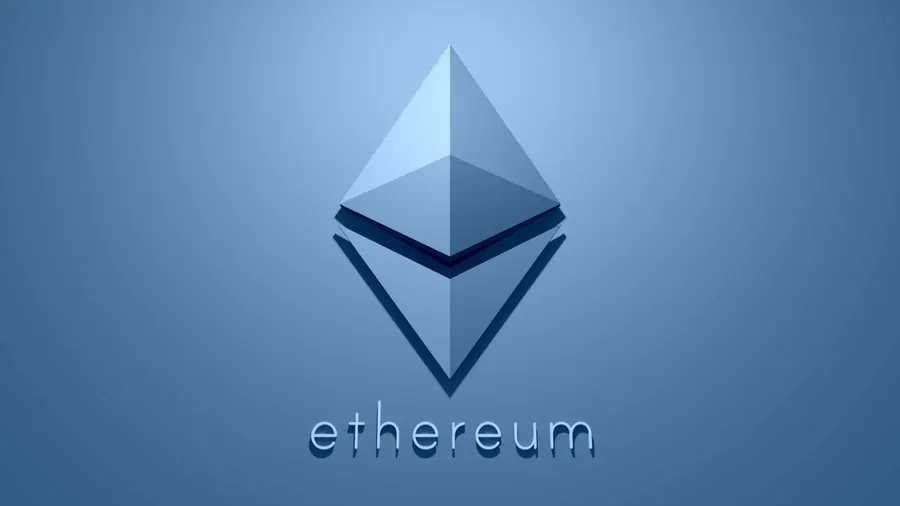Ethereum (ETH) is one of the most significant innovations in the world of blockchain technology and cryptocurrency. Often described as “Bitcoin 2.0,” Ethereum expanded the use of blockchain beyond just a digital currency. It introduced the concept of a decentralized platform, allowing developers to build decentralized applications (dApps) and smart contracts on its network. Since its launch in 2015, Ethereum has grown into a powerful force in the decentralized finance (DeFi) space and has set the foundation for many innovations, including Non-Fungible Tokens (NFTs) and Decentralized Autonomous Organizations (DAOs). In this article, we will explore everything you need to know about Ethereum, its history, how it works, and its significance in the future of technology and finance.
1. The History of Ethereum
Ethereum was proposed in late 2013 by Vitalik Buterin, a Russian-Canadian programmer and writer who had previously worked on Bitcoin projects. Buterin envisioned a blockchain that could be used for more than just sending and receiving money, as was the case with Bitcoin. Instead, he imagined a decentralized platform where developers could deploy smart contracts—programs that automatically execute when certain conditions are met—on a blockchain.
Ethereum’s whitepaper was released in 2014, outlining the technical aspects of this new blockchain, and a crowd sale was held to raise funds for development. By 2015, the first Ethereum network, known as “Frontier,” was launched. Ethereum’s ability to allow developers to create decentralized applications and smart contracts opened up a world of possibilities, setting it apart from Bitcoin and other cryptocurrencies that existed at the time.
2. How Ethereum Works: The Technology Behind ETH
Ethereum is a decentralized, open-source blockchain network that supports smart contracts and decentralized applications (dApps). While Bitcoin’s blockchain is primarily used for peer-to-peer payments, Ethereum’s blockchain serves as a global computing platform. Let’s break down some of the key technical components of Ethereum:
a) The Ethereum Virtual Machine (EVM)
The Ethereum Virtual Machine (EVM) is a core feature of Ethereum. It is a runtime environment for executing smart contracts on the Ethereum blockchain. The EVM ensures that all nodes in the Ethereum network agree on the execution of smart contracts and that the contract behaves the same way regardless of who executes it. Developers can write smart contracts in various programming languages, including Solidity, which is the most popular for Ethereum.
b) Smart Contracts
Smart contracts are self-executing contracts with the terms of the agreement directly written into code. These contracts automatically enforce, verify, or execute the terms of an agreement without the need for intermediaries like lawyers or banks. For example, a smart contract could be used to manage the release of funds in an escrow account once both parties meet the agreed-upon conditions.
Smart contracts are an essential part of Ethereum and have revolutionized industries like finance, real estate, insurance, and more, by enabling trustless agreements that execute automatically.
c) Gas Fees
Ethereum uses a system known as Gas to calculate the computational effort required to execute transactions and smart contracts. Gas is paid in ETH, and it is used to compensate miners for the resources they use to process and validate transactions on the Ethereum network. The gas fee depends on network demand, with higher demand leading to higher gas prices. As Ethereum’s popularity has grown, the issue of high gas fees has become more prevalent, prompting ongoing development efforts to solve this challenge, including Ethereum 2.0 (discussed later).
d) Decentralized Applications (dApps)
One of Ethereum’s most significant contributions is the ability to run decentralized applications, or dApps. dApps are applications that run on a decentralized network rather than relying on a centralized server. They offer various advantages, including censorship resistance, transparency, and security. These applications are built using smart contracts on the Ethereum blockchain and can be used for a wide range of purposes, from financial services and gaming to supply chain management and social media.
Some notable examples of dApps include:
- Uniswap: A decentralized exchange (DEX) that allows users to swap tokens without needing an intermediary.
- Aave: A decentralized lending platform that enables users to borrow and lend assets without the need for a traditional bank.
- Cryptokitties: One of the first popular NFT games where users can breed and trade unique virtual cats.
3. The Role of Ether (ETH) in the Ethereum Ecosystem
Ether (ETH) is the native cryptocurrency of the Ethereum network. While it shares some similarities with Bitcoin, it has a different primary function. Ether serves as “fuel” for the Ethereum network, as it is used to pay for transaction fees, deploy smart contracts, and reward miners who validate transactions.
a) ETH as a Store of Value and Investment
Though Ethereum was not originally designed as a store of value like Bitcoin, ETH has gained popularity as an investment asset due to its growing ecosystem and increasing demand. Many investors view ETH as a hedge against the volatility of traditional markets and as a potential growth asset within the broader cryptocurrency space. Ethereum’s role in DeFi, NFTs, and dApps has helped drive its adoption and contributed to its position as the second-largest cryptocurrency by market capitalization.
b) ETH as Gas
In the Ethereum network, every operation requires computational resources, and users must pay for these resources in the form of gas. ETH is used to pay gas fees, and the amount of gas required depends on the complexity of the operation being executed. Simple transactions like sending ETH between wallets require less gas, while more complex operations like executing a smart contract demand more gas.
4. Ethereum 2.0: The Transition to Proof of Stake
One of the most critical developments for Ethereum’s future is Ethereum 2.0 (also known as Eth2 or Serenity). Eth2 is a series of upgrades designed to make Ethereum more scalable, secure, and sustainable. Currently, Ethereum operates on a Proof of Work (PoW) consensus mechanism, similar to Bitcoin, where miners solve complex mathematical problems to validate transactions and secure the network.
However, Proof of Work has several drawbacks, including high energy consumption and slow transaction speeds. To address these issues, Ethereum is transitioning to a Proof of Stake (PoS) consensus mechanism. In a PoS system, validators are chosen to create new blocks based on the number of ETH they “stake” or lock up as collateral. This change is expected to significantly reduce energy consumption, increase transaction throughput, and improve overall network efficiency.
The Ethereum 2.0 upgrade consists of several phases:
- Phase 0 (The Beacon Chain): Launched in December 2020, the Beacon Chain introduced PoS to Ethereum. It operates parallel to the Ethereum mainnet but does not process transactions or smart contracts.
- Phase 1 (Shard Chains): Sharding is a method of dividing the Ethereum network into smaller pieces, or “shards,” to improve scalability. Shard chains are expected to be introduced in this phase, allowing Ethereum to process many transactions simultaneously.
- Phase 2 (Full Transition to PoS): This phase will mark the full transition to PoS, where the Ethereum mainnet will be merged with the Beacon Chain, and PoW will be phased out.
5. Ethereum and DeFi: The Future of Finance
Ethereum has played a pivotal role in the rise of Decentralized Finance (DeFi). DeFi is a movement that seeks to recreate traditional financial systems, such as banking, lending, and trading, using decentralized technologies like blockchain and smart contracts. The DeFi ecosystem is built primarily on Ethereum, making it the backbone of this new financial paradigm.
a) Decentralized Exchanges (DEXs)
One of the cornerstones of DeFi is decentralized exchanges (DEXs), which allow users to trade cryptocurrencies without relying on a centralized intermediary. Uniswap and Sushiswap are examples of DEXs built on Ethereum that use smart contracts to facilitate peer-to-peer trading.
b) Lending and Borrowing
Platforms like Compound and Aave allow users to lend their assets to others and earn interest or borrow assets by providing collateral. Unlike traditional financial systems, these platforms operate entirely through smart contracts, removing the need for banks or intermediaries.
c) Stablecoins
Stablecoins are cryptocurrencies that are pegged to the value of a stable asset, such as the US dollar. Ethereum hosts some of the most widely used stablecoins, including USDT (Tether), USDC (USD Coin), and DAI. These stablecoins play a crucial role in DeFi, providing liquidity and stability in a volatile market.
6. Ethereum and NFTs: Revolutionizing Digital Ownership
Another significant trend driven by Ethereum is the rise of Non-Fungible Tokens (NFTs). NFTs are unique digital assets that represent ownership of a specific item or piece of content, such as art, music, virtual real estate, or collectibles. Unlike traditional cryptocurrencies like Bitcoin or Ether, which are fungible (meaning each unit is interchangeable with another), NFTs are one-of-a-kind.
Ethereum’s ERC-721 and ERC-1155 token standards provide the foundation for creating NFTs, making it the go-to blockchain for the NFT space. The explosion of NFT platforms like OpenSea, Rarible, and SuperRare has given creators and artists new ways to monetize their work and connect with global audiences.
7. The Future of Ethereum
The future of Ethereum looks promising, with Ethereum 2.0 on the horizon and continued growth in the DeFi and NFT sectors. As Ethereum transitions to Proof of Stake and implements sharding, it will address many of the scalability issues that have plagued the network, making it more



